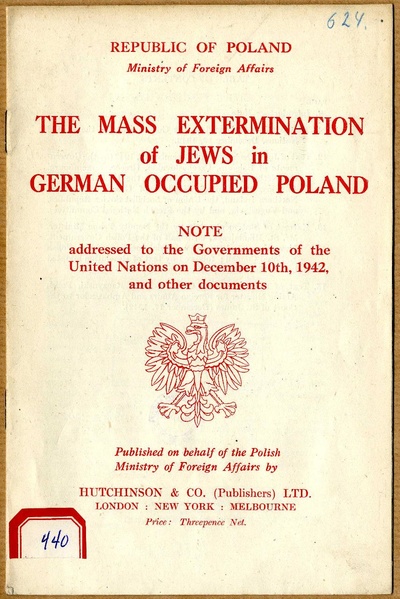Holocaust and Memory
Film: For the Living (1994)
I. Official Secrets: What
the Allies Knew
A. How Much Was Known, And When?
B. What Was Done? What Could Have Been Done?
Text: The Riegner Telegram (August 8, 1942)
Image: John Pehle (1909-1999), Director of the War Refugee Board (1944-1945)
Map: Bombing Blast Zones (July/August 1944)

II. Settling Accounts? Prosecuting
Genocide
A. Military Tribunals
B. Trials Conducted by Individual Nations
C. De-Nazification, Cold War, and the German Central Tribunal
D. Reparations
III. The Shapes of Postwar Memory
IV. Film:
For the Living (1993)

Image: The courtroom of the International Military Tribunal,
Nürnberg, 1946-1947. Image source: USHMM.
Image right:
SS-Obergruppenführer Erich von dem Bach-Zelewski. During the war, Bach-Zelewski had been the Higher SS and Police Leader in the region of Russland-Mitte (which corresponds roughly to the territory of Belarus). In that capacity, he had overseen open-air killings in 1941; in the autumn of 1944, he had commanded German forces in the suppression of the Warsaw uprising. At the IMT trial, he served as a witness for the prosecution; but he escaped extradition to the USSR and was sentenced to ten years’ house arrest. In 1964, he was sentenced to life in prison for his part in the murder of six
communists; after seven years he jumped parole and took refuge in a private clinic in Nürnberg, where he was later discovered. Returned to prison, he died in 1972.

Image: Otto Ohlendorf pleads not guilty at his arraignment for crimes against humanity at the Einsatzgruppen trial on 27 September 1947. The twenty-four defendants at this trial were all leaders of the mobile killing units of the SD, and were indicted for crimesa against humanity, war crimes, and with membership in organizations declared criminal by the International Military Tribunal, or IMT. As commander Einsatzgruppe D, which operated in the sourthern Ukraine, Ohlendorf was responsible for the killing of some 90,000 people from June 1941 to March 1942. Like Ohlendorf, all the defendants pleaded not guilty, claiming that they had acted legally as soldiers, following orders handed down from above. One of the defendants, Emil Hausmann, committed suicide; another was deemed too ill to stand trial. Of the remaining twenty-two, fourteen, including Ohlendorf, were sentenced to death. The remainder received prison sentences ranging between ten and twenty years. Ultimately, only four of the death sentences were carried out; for his crimes, Ohlendorf was hanged in 1951. Sentences for the remaining ten were commuted to prison terms or the defendants were parolled. All the defendants still serving time were released from prison in 1958. Image source: USHMM, courtesy National Archives.
